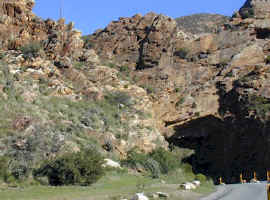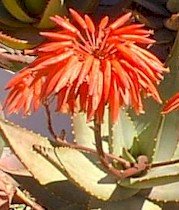 A visit to the Karoo Botanical Garden in Worcester, South Africa.
A visit to the Karoo Botanical Garden in Worcester, South Africa.On our way to the Small Karoo we made a quick stop at the Karoo Botanical Garden in Worcester. No way that we can drive past our favourite garden. As it is, we travel the 250+ kilometre(there and back) to the garden so often, they know us by name.
Photo left shows a very small portion of the botanical garden. I like this portion, it has a natural look and atmosphere. The syphostemmas with their fat naked stems and branches held up towards heaven, always catch my eye. The small flowers blooming between the large plants are gazanias. The very high tree aloe is Aloe barberae.

Something special amongst the aloes was the white Aloe ferox photo left and the red Aloe tenuior bush in flower photo below.
A white aloe ferox is scarce. The white Aloe ferox flowers become much lighter as they open and the antlers are maroon-black. A very nice contrast. see photo at the bottom.
Even with seeds from two white Aloe ferox plants, the chance of getting white is very small. It is better to have Aloe ferox with different color flowers growing together and pollinate them all with each other. Then sow 100-200 of those seeds and maybe you will get a few of them blooming white

red Aloe tenuior bush

photo left:- Alexandre ViossatThis photo was not taken in the Karoo Botanical Garden. Alexandre Viossat kindly permitted me to place the photo to show some of the different natural colors in Aloe ferox. These colours were not cultivated, the colours occur naturally in the very large Aloe ferox habitat.





